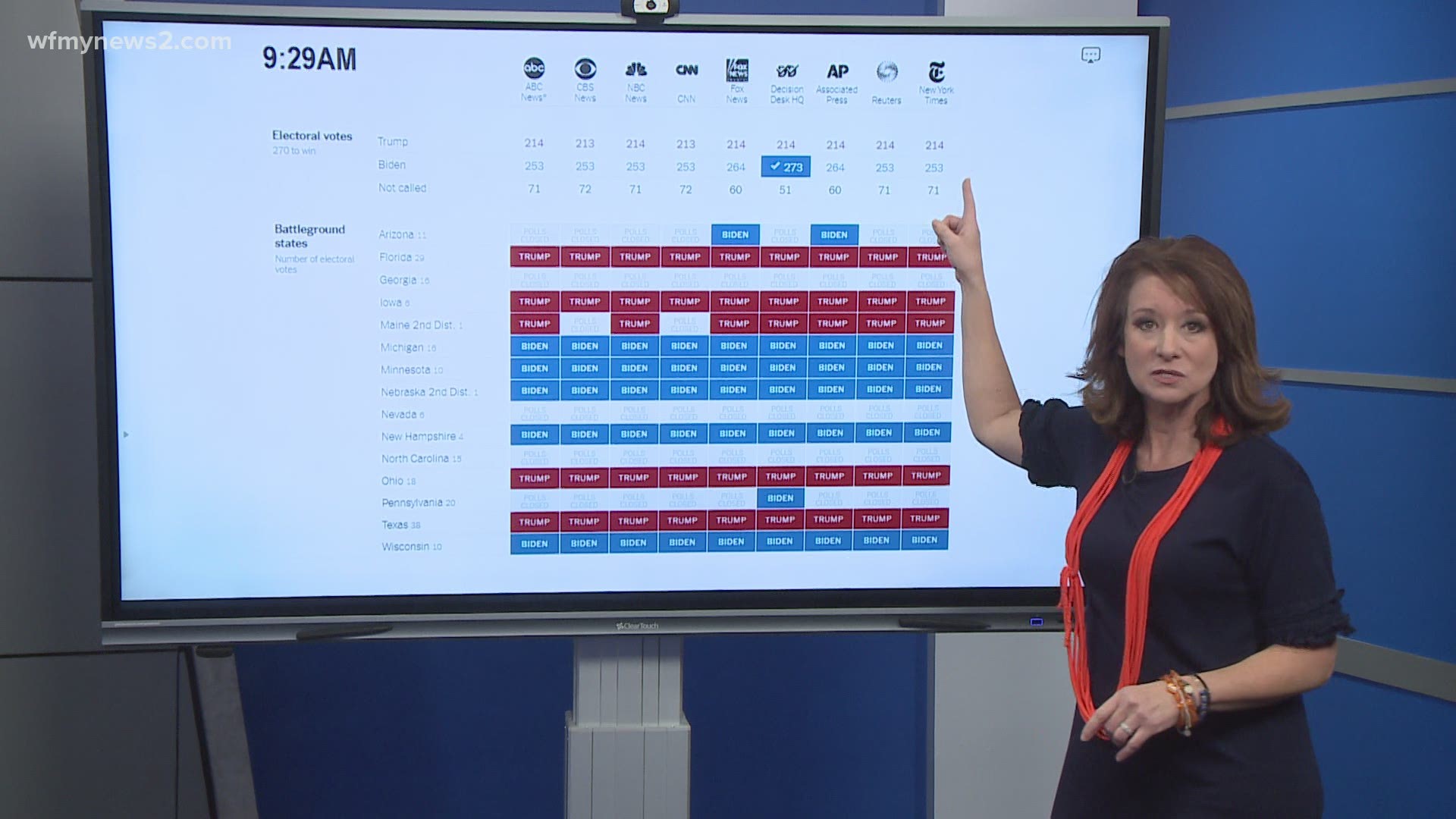GREENSBORO, N.C. — Editor's Note: Video features three things you should know post-election. Information below from WCNC a TEGNA partner
If you notice the Electoral College totals are different on WFMY News 2’s newscast than the website, there's a reason for that.
While watching WFMY News 2, you may notice the Electoral College numbers are different than what is listed on our website.
There's an explanation as to why. At WFMY News 2, we source results from CBS News and The Associated Press (AP). Both new outlets have processes in place to handle the influx of votes, counts and results. The WFMY News 2 site uses totals from The Associated Press while on-air draws its totals from CBS News or The Associated Press.
ONLINE
The Electoral College totals you see online are populated by The Associated Press. It has reported race results for more than 170 years. The Associated Press count’s the nation’s vote in real-time while reporting results of the presidential, congressional and state elections.
The Associated Press uses vote count data to declare winners in some 7,000 races.
“There is no national election commission in the United States that tells us who won on Election Day,” David Scott, a deputy managing editor who helps oversee AP's coverage of elections, said. “Statewide results aren't available in every state, either. If we want to know who the next president will be, we've got to do the math ourselves — county by county nationwide.”
The AP uses a 50-state network of local stringers who Scott said have trusted relationships with county clerks and other local officials. These stringers collect votes locally, while other AP journalists gather results from state or county websites, as well as via electronic data feeds from states.
That vote count is then transmitted to AP members and customers across the country and around the world, Scott said. That data powers election night maps and fills the vote total graphics shown online and on air.
State-based analysts and editors in Washington at AP's Decision Desk also use that vote count to “call races," or declare the winners. Along with the vote count, Scott said, the decision team uses additional information provided by AP's election research team, such as demographic data about a state and statistics about advance voting, to make race calls.
“AP does not make projections or name apparent or likely winners,” Scott said. “If AP cannot definitively say a candidate has won, we don't speculate.”
TV NETWORKS
While Fox News is collaborating with the AP in VoteCast, CBS, ABC, NBC, and CNN have kept their exit poll and are funding their own separate vote count.
CBS, NBC, ABC, are in Edison Research’s National Election Pool. The Associated Press used to be a part of this pool, but they now run their own projection models with the AP VoteCast.
Both the National Election Pool and AP VoteCast collect data that is used to project races, with exit polls being a key component of both. The AP explains VoteCast also reaches beyond exit polls -- reaching voters by mail, phone, and online like a traditional poll -- to account for early and mail-in voters. The National Election Pool expanded in-person early voting interviews this year to account for increases in such voting.
The different national media outlets who call races separately follow similar methodology and decision-making to the AP, even if it’s not entirely the same. That means that they may call races soon after each other, but not call them at the exact same time.
Some national media outlets call races as soon as polls close when exit polls match historical trends and expectations for a state. They may also call races for a candidate who is currently losing based on where votes have been counted at that point in the night.

